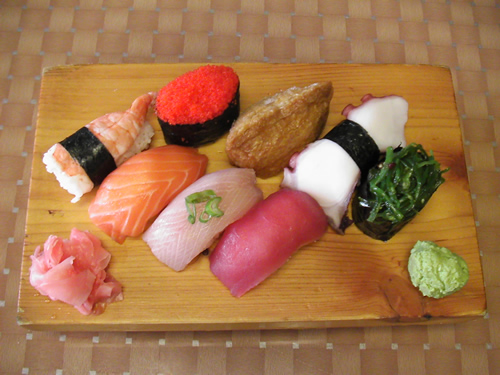
The reincarnation system for the Living Buddhas is the main point distinguishing tibetan Buddhism from other forms of Buddhism. What led to the introduction of the system?
The term Living Buddha emerged in the early Yuan Dynasty (1271-1368) when Emperor Kublai Khan honored Pagba, head of the Sagya Sect, by granting him the title “Buddha of the Western Paradise”. Thereafter, eminent Tibetan monks we distinguished themselves in the practice of Buddhism were referred to as “Living Buddhas”. However, the term Living Buddha was not recognized as a special title for a monk who became the successor of the deceaed leader of a monastery until the eventual introduction of the Living Buddha reincarnation system.
In 1252, Kublai Khan granted an audience to Pagba and Garma Pakshi, an eminent monk with the Garma Gagyu Sect. Garma Pakshi, however, sought the patronage of Monge Khan who proceeded to bestow him a gold-rimmed black hat and a golden seal of authority. Prior to his death in 1283, Garma Paksli penned a will to ensure the established interests of his sect. The will advised his disciples to locate a boy to inherit the black hat, with the instruction based on the premise that Buddhist idelogy is eternal, and a Buddha would be reincarnated to complete the missions he had initiated. Garma Pakshi's disciples acted in accordance with the will and located the reincarnated soul boy of their master. The event marked the introduction of the Living Buddha reincarnation system for the Black-Hat Line of Tibetan Buddhism. During the Ming Dynasty (1368-1644), Emperor Yongle honored Black-Hat Living Buddha Garmaba as the “Great Treasure Prince of Dharma”, the first of the three “Princes of Dharma”. The Living Buddha reincarnation system remains in operation today. On September 27, 1992, the Curpu Monastery in Doilungdeqen County, Lhasa, was the site of a grand ceremony marking the enthronement of the 16th Living Buddha Garmaba. The event marked a new page in th history of the Garma Gagye Sect.
Various sects of Tibetan Buddhism reacted to the introduction of the Living Buddha reincarnation system by creating numerous similar systems. During the Qing Dynasty (1644-1911) reign of Emperor Qianlong alone, 148 Grand Living Buddhas registered for reincarnation with the Board for Mongolian and Tibetan Affairs, with the number of registrants rising to 160 by the end of the dynasty. The most influential reincarnation systems have since been the Dalai and Bainqen Lama systems.
The reincarnation system for the Dalai Lama was introduced in the 16th century. In the early years of the Qing Dynasty, the 5th Dalai Lama journeyed to Beiing to pay homage to Emperor Shunzhi. The Qing emperor granted him the honorific title of “the Dalai Lama, Overseer of the Buddhist Faith on Earth Under the Great Benevolent Self-subsisting Buddha of the Western Paradise”. The title Dalai Lama was thus established and is still in up today. The current Dalai Lama was enthroned in the Potala Palace on February 22, 1940, during a ceremony presided over by Wu Zhongxin, minister of the Commission for Mongolian and Tibetan Affairs of the nationalist government of the Republic of China (1911-49). The nationalist government ordered that he be confirmed as the reincarnated soul boy of the 13th Dalai Lama without the requirement to carrying the established method of drawing lot from the golden urn and that he instead directly succeed as the 14th Dalai Lama. The reincarnatin system for the Bainqen Lama was introduced in 1713 when the 5th Bainqen was granted the honorific title as “Bainqen Erdeni”, with Erdeni meaning “great treasure” in Manchu. The 9th Bainqen Erdeni and the 13th Dalai Lama were at odds during the period of the Republic of China, with the 9th Bainqen Erdeni departing for China's hinterland. He later passed away in Qinghai Province. The Tashilhungpo Monastery, the resident monastery for the Bainqen Erdeni, located a boy by the name of Gongbo Cidain. All signs pointed to the fact that he was indeed the reincarnated soul boy of the 9th Bainqen Erdeni. Li Zongren, the acting president of the Republic of China, issued a special order instructing that the boy “be excuses from the lot-drawing method and given the special permission to succeed as the 10th Bainqen Erdeni”. The grand enthronment ceremony held in the Tar Monastery on August 10, 1949, was presided over by Guan Jieyu, minister of the Commission for Mongolian and Tibean Affairs of the nationalist government of the Republic of China. The Gelug Sect of Tibetan Buddhism came to power in Tibet in the 17th century and the Living Buddha reincarnation system became a bone of contention with the upper class in Tibet. In 1793, as part of an effort to turn the tide by overcoming drawbacks characteristic of soul boys nominated from the same tribes, the Qing government promulgated the 29-Article Ordinance for the More Efficient Governing of Tibet. Article one of the Ordinance stipulates: In order to ensure the Yellow Sect continues to flourish, the Grand Emperor bestows it with a golden urn and ivory slips for use in confirming the reincarnated soul boy of a deceased Living Buddha. For this purpose, four major Buddhist Guardians will be summoned; the name's of candidates, as well as their birth years, will be written on the ivory slips in the three languages——Manchu, Han chinese and Tibetan; the ivory slips will be placed into the golden urn and learned Living Buddhas will pray for seven days before various Hotogtu Living Buddhas and High Commisioners stationed in Tibet by the Central Government officially confirm the reincarnated soul boy by drawing a lot from the golden urn in front of the statue of Sakyamuni in the Jokhang Monastery. The system of drawing lot from the golden urn thus perfected the Living Buddha reincarnation system of Tibetan Buddhism. Following the lot-drawing ceremony, the High Commissioners and leaders of the soul boy search group were required to report the result to the Central Government. The enthronement ceremony was held following the approval of the Central Government. The Qing court commissioned artisans to create two golden urns. One golden urn, used to confirm reincarnations of the Dalai Lama and the Bainqen Erdeni, is currently housed in the Potala Palace in Lhasa. The other, used to confirm the reincarnations of Mongolian and Tibetan Grand Living Buddhas and hotogtu Living Buddhas, is housed in the Yonghegong Lamasery in Beijing.








 PREVIOUS
PREVIOUS